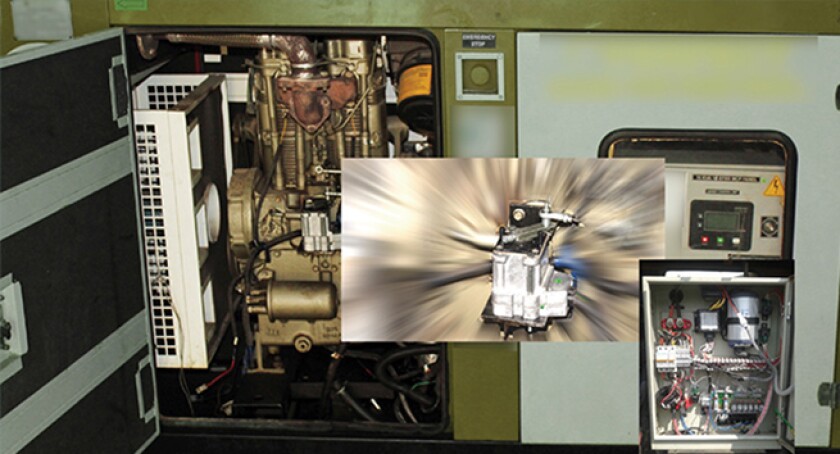SEDEMAC offers energy efficient and innovative controls for small engines and power-trains and is currently offering technologies to support telecom operators and towercos in reducing their level of fuel consumption. With a focus on the Indian market but an eye on international expansion, Shashikanth Suryanarayanan, Chairman of the company, discussed with us his views on how telecom and tower companies can save energy and how SEDEMAC’s offerings can support them.
TowerXchange: Please introduce SEDEMAC, its activities and footprint
Shashikanth Suryanarayanan, Chairman, SEDEMAC:
We focus on creating mechatronic solutions for engines and power trains. The company was created by a research group I led at the Indian Institute of Technology in Bombay.
Our primary two sectors of interest are gen-sets and two-wheelers. We are very active in the two-wheelers side as India is the largest market for internal combustion engines for motorbikes and scooters in the world. This is one of our main areas of focus at SEDEMAC due to the constant growth in demand in India.
On the small gen-sets side, we have created two solutions. On one hand we focus on the retail market and on the other one, on the telecom industry. These are two very well established markets in India and we have been able to acquire key engine and gen-set manufacturers as clients.
TowerXchange: What has been your company’s involvement in the energy sector for telecommunications companies so far?
Shashikanth Suryanarayanan, Chairman, SEDEMAC:
Around 2009 to 2010 we started to focus on the telecom sector. In India, telecom towers currently consume an average of 4,000-6,000 litres per year of diesel. In several rural and remote locations in India access to the national grid is very poor. In these instances the back-up power solution can become their main source of power. Diesel generators are key in most of these locations.
In 2011, a new technology was introduced that would allow diesel generators to run at a variable speed mode through a product popularly known as the “DC DG”. This technology enabled the speed of the generator to vary depending on its load and, as a result, allow a substantial reduction in fuel consumption. SEDEMAC was the primary enabler of this variable speed technology. However, DC DGs haven’t yet reached the scale expected in India, primarily because of capex challenges, and because many gen-sets are not retrofit-ready, while new DG deployments are decreasing substantially.
Our new solution, Econoseek, specifically addresses these two problems. Econoseek can be retrofitted and the capex involved is substantially less compared to traditional DC DGs. In fact, we have achieved proven savings of 15-30% in diesel consumption.
TowerXchange: Does SEDEMAC plan to develop operations in different countries?
Shashikanth Suryanarayanan, Chairman, SEDEMAC:
Globally, GSMA estimates that there are one million poor grid telecom sites of which a significant proportion are in South Asia and Africa. The company is now starting to reach out to potential clients in Africa after having deployed this technology successfully in India for around a year and a half. Given that the capex problem is more defined in Africa than in India we believe that this product has significant potential. The Southeast Asian market also presents some opportunities.
TowerXchange: Who are SEDEMAC’s main clients?
Shashikanth Suryanarayanan, Chairman, SEDEMAC:
A few thousand deployments of our variable speed control products have already been made across the Indian sub-continent. We work with some of the leading telecom companies in this sector. This has primarily been achieved through our deployment partners. We work with Mahindra Powerol and Eicher/TAFE who are active DG manufacturers for the telecom tower segment in India.
TowerXchange: How can SEDEMAC’s products help telecom companies achieve green targets/reduce energy waste and carbon emission?
Shashikanth Suryanarayanan, Chairman, SEDEMAC:
For each litre of diesel you save, you avoid emitting about 2.5 Kg of carbon dioxide. In India alone, variable speed technology has the potential to save about 300-400 million litres of diesel per annum, translating to about an emission reduction of about a billion kilograms of carbon dioxide. This technology is a relatively cheap option for telecom companies looking to reduce their level of diesel consumption and power waste.
For each litre of diesel you save, you avoid emitting about 2.5 Kg of carbon dioxide. In India alone, variable speed technology has the potential to save about 300-400 million litres of diesel per annum translating to about an emission reduction of about a billion kilograms of carbon dioxide.
I believe that any product that offers a significant ROI is viewed positively in the telecom tower market. On the demand side it enables operators and towercos to reduce their overall energy requirements. Alternative sources of energy such as solar have significant capex requirements, while the maintenance of solar panels can also be a challenge in remote areas.
We are confident that variable speed technology could prove to be an important part of the basket of opex reduction initiatives available to the telecom industry.
TowerXchange: What are the key challenges of adopting this type of energy saving technology?
Shashikanth Suryanarayanan, Chairman, SEDEMAC:
The primary challenges of alternative energy and energy efficiency products is on-site deployment. As previously mentioned, Indian and African towers that depend on diesel are often located in rural or remote areas and the deployment and maintenance is a challenge and requires highly reliable solutions.
A towerco looking at energy saving options will also have to navigate through a variety of solutions and select the best option which could differ depending on each site’s characteristics. So the optimal choice of the energy saving option can be a challenge in itself.
With regards to our business in India, we are now right at the verge of mass deployment, which for me means reaching 10,000-20,000 towers per year. We aren’t there yet and the decision is in the hands of towercos. However, we are optimistic as SEDEMAC has already proved itself in the Indian market and we are now ready for an exciting venture in Africa.

